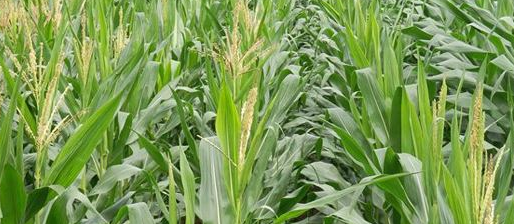1, supplement application of granular fertilizer
The high-yield practice has proved that the corn leaf area is large, the photosynthetic efficiency is high, and the leaf function period is long, which is the basic guarantee for achieving high yield. One of the important guarantees for the ripening of corn stalks is the sufficient inorganic nutrients in the flowering stage. Therefore, the attacking fertilizer should be pursued as appropriate. The attacking fertilizer is generally applied before and after the flowering stage of the ear, and the quick-acting nitrogen fertilizer is the main one. The amount of topdressing fertilizer accounts for 10%-20% of the total topdressing amount, pay attention to the combination of fertilizer and water. Each acre is applied with 15 kg of urea (15% of total fertilizer), and the grain filling intensity is obviously increased. The 1000-grain weight is increased by 22 grams.
The high-yielding summer maize requires a large amount of fertilizer in the late growth stage, and the plot that lacks fertilizer during the filling stage can also be quickly replenished by foliar topdressing. Foliar spraying with 1%-2% urea solution, 3%-5% superphosphate solution or 0.1%-0.2% potassium dihydrogen phosphate solution during grouting can prolong the functional period of the leaf, and the 1000-grain weight can increase by more than 7%. .
2, timely watering and draining
Soil moisture status at flowering stage is one of the important factors affecting root activity, leaf function and determining grain number and grain weight. The key water of the corn flower should be filled twice: the first time from flowering to grain formation, it is the key water for promoting the number of grains; the second time is the key water for increasing the grain weight in the milk ripening stage. The flowering period irrigation should be different depending on the cockroach, and it should be used flexibly. The sandy loam and light loam should increase the number of irrigation; the clay and loam can be filled with water in a timely manner; the large population should increase the number of irrigation and irrigation. During the grain filling process, if water accumulates in the field, it should be drained in time to prevent damage and reduce production.

3, artificial emasculation and auxiliary pollination
Manual emasculation is an effective stimulation measure, which generally increases production by 4.2-14.5%. In the high-yield fields with large populations, the tassels are removed, and the yield-increasing effect is more obvious. The emasculation should be carried out when the tassel has just been withdrawn and has not yet bloomed. It is easy to bring out the leaves too early, affecting the photosynthetic area, and too late tassels have blossomed loose powder, reducing the emasculation effect. It is advisable to use interlaced stagnation or stagnation. The number of male plants is not more than half of the number of whole plants. Do not go to the ground or the ground, in order to facilitate the marginal corn ears to be pollinated. After the pollination, remove the remaining tassels.
Artificial assisted pollination can reduce baldness, lack of grain, and increase the number of grains per ear. Auxiliary pollination is more effective for plants with late silking and for larger and weaker plots. Tests have shown that artificially assisted pollination can increase yield by more than 4.5%, and interlaced emasculation combined with artificial assisted pollination can increase yield by more than 11.5%. Artificial pollination is generally carried out at the end of the flowering period and at 9:00 to 11:00 on the sunny day.
4, cultivating weeding
The shallow cultivating in the later stage has the functions of breaking the soil layer, loosening the soil, weeding and protecting the mites, which is beneficial to microbial activities and nutrient decomposition, which can promote root absorption, prevent premature aging, increase grain weight, and create favorable conditions for wheat sowing. If conditions permit, it can be simmered once in the late filling stage.
5, pest control
Summer maize flower grain stage often has corn borer, armyworm, cotton bollworm, aphid and so on. Especially in recent years, the degree of aphid damage has aggravated, and prevention should be strengthened. Generally, 2.5% of the enemy kills 1000 times of liquid to spray the tassel to control the corn mash, and the leaf surface sprays 50% phoxim 1500 times liquid to control the armyworm, cotton bollworm, 40% omethoate 1500-2000 times liquid to control the mites. In the silking period, 500-800 times of dichlorvos can also be used to control corn borer and cotton bollworm.
Greenhouse Automatic Proportional Pump
Fertilizer pump mounted directly on the pipe, the kinetic energy of pipe flow to drives the pump to work at a set ratio to suck high erconcentration drug or quantitative fertilizer in to the pump. After mixed with the water and delivered to downstream. No matter How to change the water pressure, Drug or fertilizer will be mixed and discharged according to a certain proportion.
Greenhouse Automatic Proportional Pump,Greenhouse Automatic Drip Irrigation,Greenhouse Automatic Fertilizer Injector
JIANGSU SKYPLAN GREENHOUSE TECHNOLOGY CO.,LTD , https://www.greenhousehydroponic.com